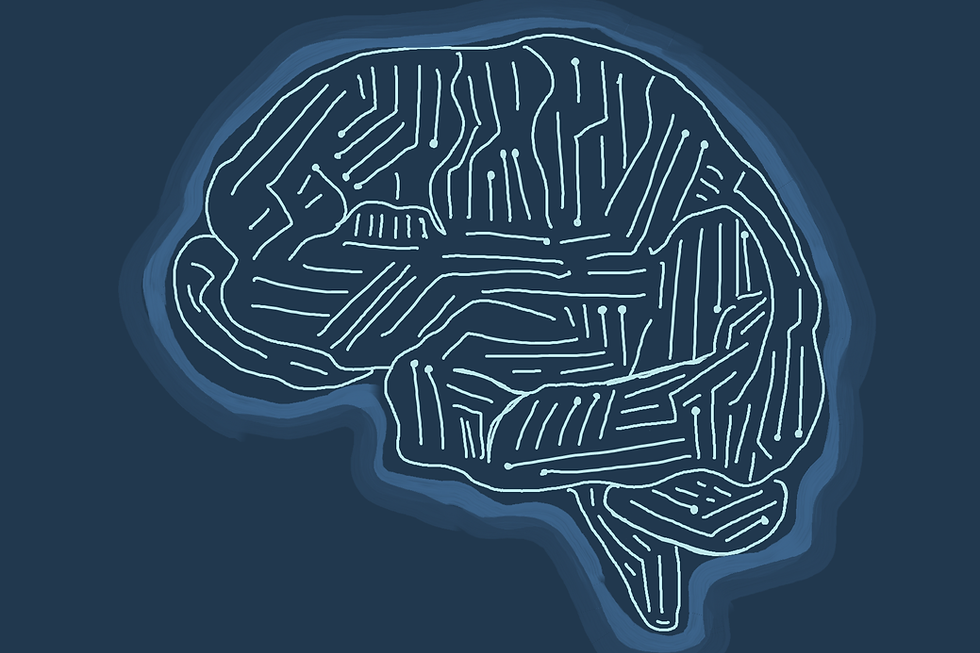#TheDress
- The Natural Philosopher
- Oct 9, 2021
- 2 min read

By Maryann Makosiej
Circa 2015, the image of a black and blue (or perhaps gold and white?) dress went viral on the Internet. Talk shows, office spaces, classrooms--everyone was incredulous in talking about it. How could we all have seen such different color pairings of the same image at the same time? Stacey Aston and Anya Hurlbert, two scientists at the Neuroscience Institute in the UK, have a few ideas.
Color Constancy
Color constancy is the theory that your perception of the color of an object remains the same no matter the small changes in how light shines around it. Your brain is able to control for the “incident illumination”--those small, minute changes--by unconsciously discounting them in order to hold the color constant. The dress? It tricked your brain system.
Aston & Hulbert (2017) hypothesized that the background colors in #theDress are ambiguous to the brain. The human visual system is better at ascertaining the validity of certain colors over others. Discriminating colors, the researchers write, is more difficult with blue illumination versus yellow, red, or green. The background is enigmatic enough that observers have to draw on past, unconscious experience to decide how to cancel the incident illumination and overcome the ambiguous visual background. The difference in perception, then, is based on our prior visual experiences.
About the study
The study was conducted among undergraduate volunteers (n=35) at the Neuroscience Institute. The students were asked to complete matching tasks on the computer. They were asked to name the colors of the dress body and lace before and after the matching tasks and completed a morning vs. evening personality questionnaire. They were also asked to complete a task to measure their color constancy thresholds (i.e. to what extent did they see blue vs. green vs. red).
Results
The study supported the color constancy hypothesis. How the volunteers perceived the incident illumination--the background noise, essentially--changed the way that they inferred the color of the dress. Their unconscious past experiences quite literally biased their visual perception. If the background color of a dress can impact the literal color that we perceive it to be, what does it say about our own deeper, everyday biases?
Yes, it’s just #TheDress. Funny and strange, the harried photo captured the attention span of America for a brief moment in 2015. However, under all that lace is a lot more to see. Aston & Hulbert remind us of the ways in which unconscious bias can trick our brains into perceiving a different view. Past experiences shape the ways in which we see the dress and the world. As we move forward as scientists and citizens, it is an image worth remembering.
P.S. About the morning vs. evening personality questionnaire
Other factors may also well be at play. The article suggested another hypothesis. Are you a morning person, by chance?
Aston & Hulbert asserted that “morning types” might have more experiences of daylight illumination and thus perceive blues better. “Evening types”, by comparison, may be more tuned to yellows because of artificial lighting. However, their correlation was weak and to common knowledge, no other papers have been able to ascertain statistical significance.
References
Aston, S., & Hurlbert, A. (2017). What #theDress reveals about the role of illumination priors in color perception and color constancy. Journal of vision, 17(9), 4. https://doi.org/10.1167/17.9.4


Đắm chìm trong thế giới đỏ đen cùng sunwin – nơi mô phỏng casino Ma Cao cực chân thực. Cập nhật link tải nhanh chóng tại sunwinn deal, đăng ký chơi liền tay!
Trải nghiệm đỉnh cao cá cược thể thao, casino và game đổi thưởng tại f8bet. Truy cập f8bet008 com để nhận ưu đãi liền tay và tham gia cộng đồng cược thủ chuyên nghiệp hôm nay!
Tại king88vn eu com, người chơi có thể truy cập hệ thống KING88 với hàng trăm tựa game hấp dẫn. Giao dịch an toàn, minh bạch, mang lại trải nghiệm giải trí trọn vẹn và đỉnh cao.
Cùng 789WIN bước vào thế giới giải trí hấp dẫn với tỷ lệ trả thưởng cao. 789winv dev là nơi nâng cao cơ hội thắng, giao diện thân thiện, bảo mật hiện đại, nạp rút tiện lợi.
789WIN – nơi hội tụ những trò chơi hot nhất! Khám phá ngay tại 789winv me và tận hưởng cảm giác chiến thắng với hệ thống game công bằng, trả thưởng nhanh.